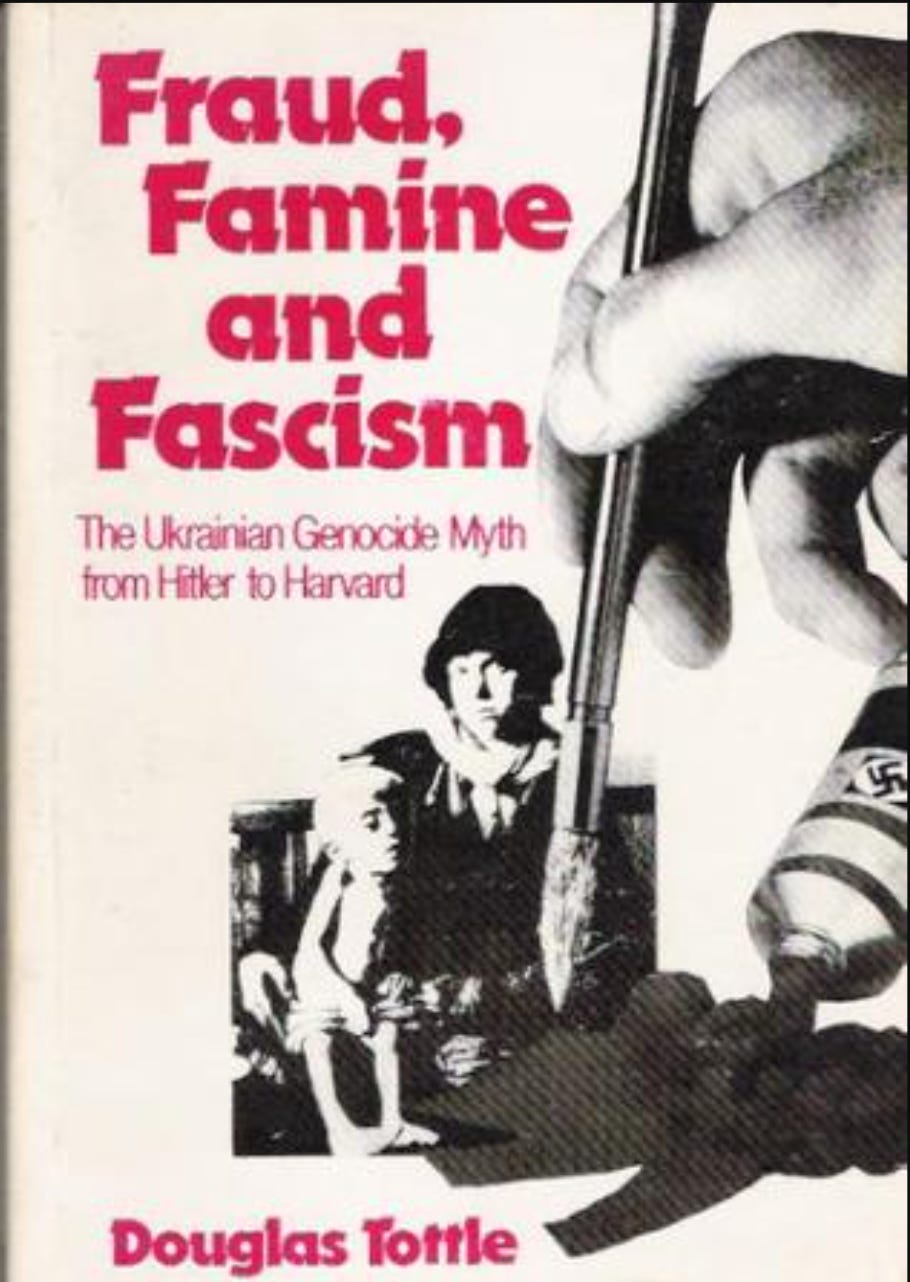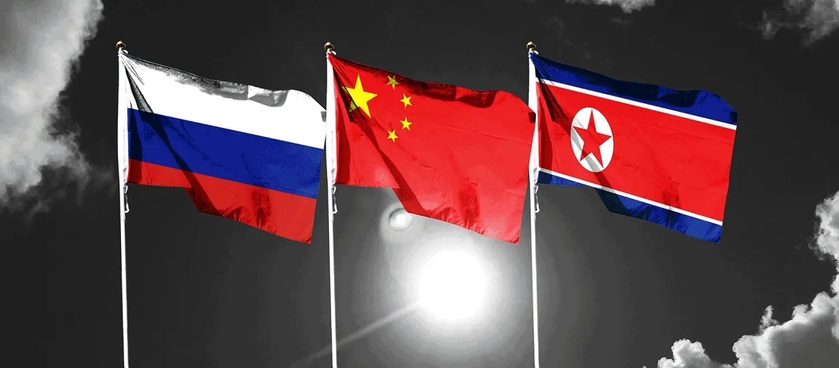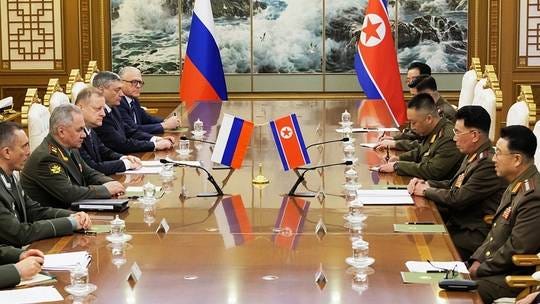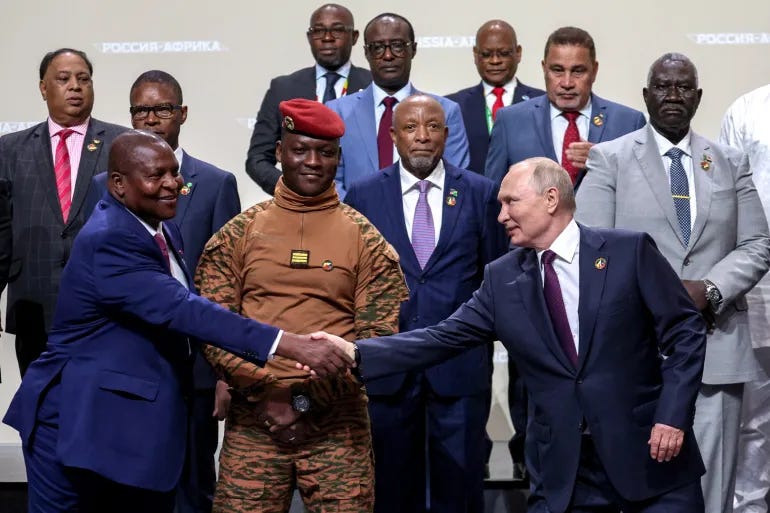By Evan Reif
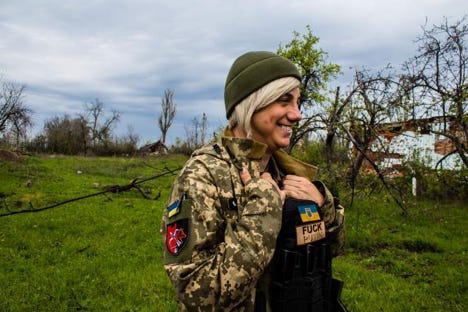
Sarah proudly wears the colors of the holocaust perpetrator Ukrainian Insurgent Army (UPA). Source: nypost.com
The Russo-Ukrainian war has been unique in not just the sheer volume of propaganda it has generated, but also in the rise of mercenary “journalists” working as propaganda agents of a faraway foreign state. One of the most infamous of these is a woman named Sarah Ashton-Cirillo. Formerly a real estate speculator and gambler from Las Vegas, Sarah has managed to transcend most of the right-wing grifters haunting Ukraine and now works as an official spokesperson of the Ukrainian army.
In my previous article, I detailed Sarah’s longstanding ties to the far right, both at home and in Ukraine. Despite this, she has constantly been lauded by the media, receiving recognition far beyond her meager accomplishments. I urge you to read it, as this background is essential to understanding who Sarah really is, as opposed to who a carefully manicured PR campaign has made her out to be.
Unfortunately, Sarah has not been idle. In the past months, she has doubled down and is now one of the most essential propagandists for the Ukrainian far right. Once more, this noxious weed called fascism has laid down deep roots in the black soil of Ukraine.
Setting the table
Sarah has been in Ukraine for over a year now. When she first arrived, she was little more than a small-time blogger, but her connections and willingness to work with the far right led to a meteoric rise.
Sarah’s first position in Ukraine was working with the openly neo-Nazi Kraken unit, some of the most savage criminals of the war. An offshoot of Azov, Kraken was created in Kharkov by a co-founder of Azov, gangster and longtime neo-Nazi terrorist named Sergei “Botsman” Korotikh and is perhaps best known for the infamous kneecapping video that circulated online in the early running of the war.
A group of Russian POWs were pushed from a van and kneecapped on video, then mutilated, tortured, and murdered off camera by Kraken officer Sergei “Chili” Velichko. This was nothing out of the ordinary for Sergei. Before it was scrubbed, Chili’s Instagram was full of graphic evidence of his ghastly crimes at a dairy farm near Kharkov.
Sarah’s connection to Kraken was more than just a job. She lived with the Nazis in Kharkov and became one of their close friends and comrades. In an interview for the Washington Blade, Sarah recounts a time when an unnamed Azov member (most likely one of her comrades in Kraken) comforted her after Russian foreign ministry spokeswoman Maria Zakharova publicly confronted Sarah on her ties to the far right.
When the American MRA Gonzalo Lira was arrested for the first time, it was Sergei who was responsible, and his friend Sarah was the first journalist he told. Sarah called Kraken heroes and remained embedded with the unit for some time, and even filmed herself on patrol with the unit searching for “saboteurs”, using a modern euphemism for what Chili’s ideological ancestors called Bandenbekämpfung.
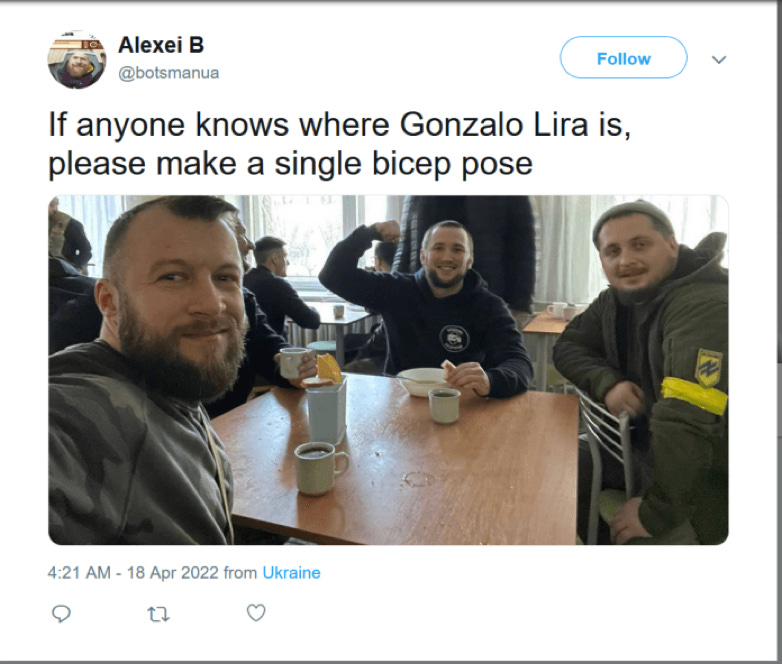
After a few months of living and working with Nazi murderers, Sarah amassed a considerable following, aided and abetted the entire time by a mainstream media establishment perfectly willing to overlook Sarah’s long-running associations with far-right terrorists. Before long, her work caught the attention of the Zelensky regime, and she began to work in an official capacity for the Kiev junta.
Her first government job came in September 2022 as a civilian representative for the Mayor of Zolochiv, Viktor Kovalenko. In October, she officially enlisted in the Ukrainian Territorial Defense and joined the Noman Çelebicihan Battalion, a small Crimean Tatar unit that is supported by NATO member Turkey.
Members of the unit are comprised mostly of and regularly express support for the neo-fascist “Grey Wolves”, a Turkish terrorist organization that has been proven through multiple court cases and parliamentary inquiries to be founded and directed by NATO intelligence. The Grey wolves are part of Counter Guerrilla, a vital branch of what is colloquially known as Operation GLADIO, the CIA’s 7 decade-long (and almost certainly ongoing), continent-spanning terrorist campaign designed to prevent “democratic” Europe from electing anti-NATO politicians by any means necessary.
The funding for this program came from massive drug trafficking, using ports in Turkey and Italy to unload heroin from Asia, and funds were laundered through the Vatican’s Banco Ambrosiano, making use of the church’s sovereign status and extreme secrecy to launder billions in drug money and distribute it to fascist terrorists away from the prying eyes of investigators.
Founded shortly after WW2, the Grey Wolves are responsible for countless crimes ranging from drug trafficking and assassination (including the attempted assassination of Pope John Paul II) to military coups against the Turkish state. They have a presence throughout Europe, deep ties to the Turkish mafia, and are considered so violent and malicious that despite their background, they are banned in several NATO states.
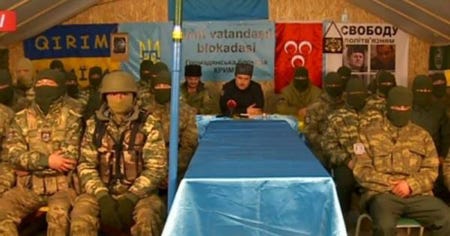
The Battalion also works hand in hand and shares many members with an international terrorist organization called Hizb ut-Tahir. The violently anti-Semitic, anti-democratic, and fundamentalist HuT seeks to create a united Shia caliphate, and its members have worked very hard to reach their goal. Starting with its founding in 1953, HuT has been involved in dozens of attempted and successful coups in Jordan, Syria, Egypt, Tunisia, and Iraq.
“In origin, no one likes the Jews except the Jews. Even they themselves rarely like each other.... The American people do not like the Jews nor do the Europeans, because the Jews by their very nature do not like anyone else. Rather they look at other people as wild animals that have to be tamed to serve them. So, how can we imagine it being possible for any Arab or Muslim to like the Jews whose character is such?... Know that the Jews and their usurping state in Palestine will, by the Help and Mercy of Allah, be destroyed "until the stones and trees will say: O Muslim, O Slave of Allah. Here is a Jew behind me, so come and kill him.”-Hizb ut-Tahir, 1999
Although it has mostly escaped scrutiny, the organization became known in America on two occasions. The first of which was in 1991, when HuT spokesman Ata Abu Rashta played a vital role in the astroturfed PR campaign to drum up support for the Persian Gulf War. He toured the Middle East giving lectures and debates condemning the Iraqi invasion of Kuwait and urging American intervention. Although the US Government had approved of the invasion only a few months earlier, the Kuwaiti monarchy spent millions to change their minds. The campaign reached a crescendo with the heavily televised and entirely fraudulent “Nariyah testimony” and was eventually successful in convincing the American elites to betray their former ally Saddam Hussein and wage war on Iraq in defense of the Kuwaiti slave state.
The second time HuT entered the American political discourse was when it was revealed that the Boston Marathon bombers Tamerlan and Dzhokar Tsarnaev were trained and radicalized by their distant cousin and HuT member Magomed Kartashov. Russian intelligence had warned the American authorities about the Tsarnaev brothers associations with HuT, but their warnings were ignored.
No official explanation was ever given for this “oversight”, but as it has been proven in court that HuT is a proxy of Turkish intelligence and operates within the same apparatus as the Grey Wolves, the reasoning is obvious. American intelligence was loathe to arrest their own agents after they had invested so much into their training.

Despite over seven decades of terrorism both great and small, HuT remains legal and operates openly in most of America’s vassals. Notably, the organization is banned in Turkey, which is happy to export its domestic terrorists to its so-called allies.
The Noman Çelebicihan Battalion was one of the many volunteer battalions created in the wake of the Maidan coup and financed by oligarchs looking to carve out a fiefdom in the new Ukraine. In this case, much of the funding came from oligarch-turned-terrorist, Lenur Islyamov.
In 2015, working together with neo-Nazi units such as Azov and Right Sector, this unit was responsible for sabotaging critical power infrastructure to Crimea, leading to a two-week-long blackout that affected over 2 million Crimeans. This was done as part of a larger strategy of blockade, an intentional effort to starve out people the Kiev junta still considers to be its citizens. For this and other crimes, Islymaov and around 60 of the unit’s soldiers were convicted in absentia by a Crimean court. They maintain their innocence, and although the sabotage of Crimean power lines is incontrovertible, they simply do not believe it is a crime to hurt Russians.
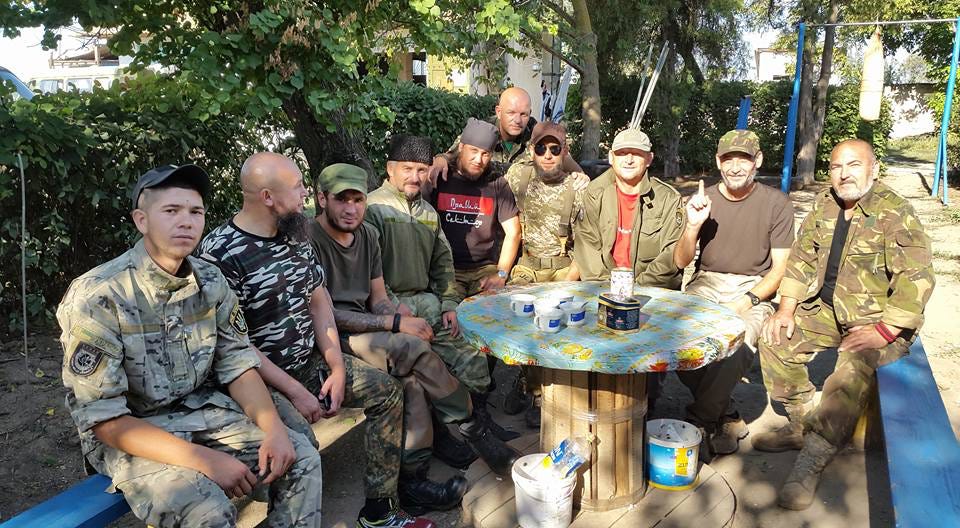
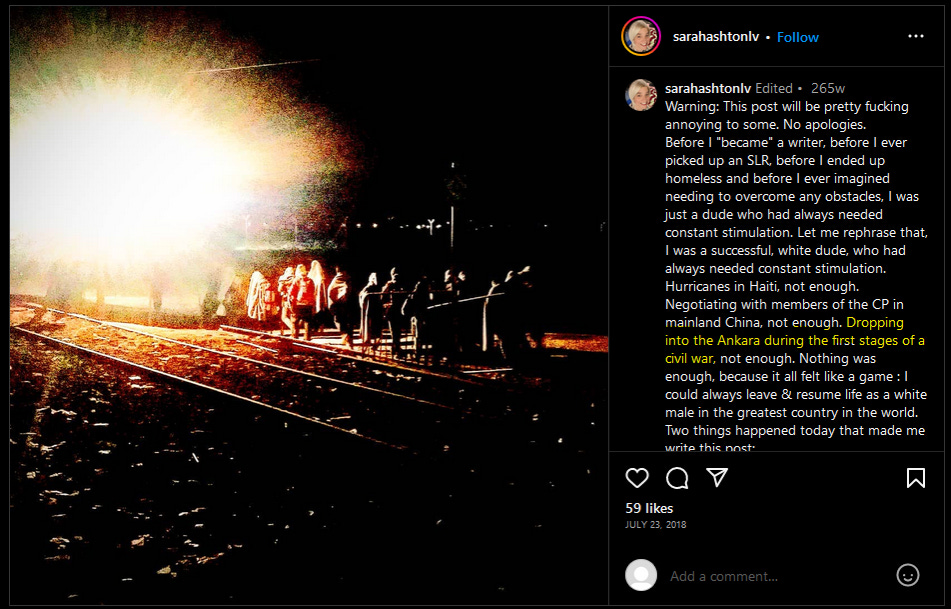
Sarah’s association with this unit could be a coincidence, however as she previously bragged on Instagram about how she was in the Turkish capital of Ankara during the attempted coup of 2016, a more profound connection cannot be ruled out. Sarah has known links to intelligence, she has ties to USAID, the US government’s regime change operation which poses as foreign aid, dating back over 20 years. She is a collaborator with the FBI as part of her “infiltration” of the Proud Boys and she is also close friends with a former British Army hacker named Vic Harkness, who worked for DSTL, the British equivalent of DARPA. While none of this represents a smoking gun, it would explain why she was so readily and willingly accepted by the Ukrainian propaganda machine.
Going all-in
Given her complete lack of credentials and relevant skills, the depth and breadth of Sarah’s role inside the Ukrainian state is almost shocking. In a country swarming with experienced and eager propagandists, we must ask why Sarah, in particular, has been given such a prominent role so quickly. She does not speak Ukrainian and had less than two weeks of training from the AFU, and yet she has become the face of the Ukrainian war effort. She is far more than a propagandist, according to USA Today, Sarah is even writing policy for the Ukrainian government. While Sarah is a pathological liar, I can find nothing to dispute this.
After a few months doing propaganda videos for the AFU, Sarah returned to the United States for a propaganda tour in December 2022. Working alongside the CIA-founded and US government-operated Voice of America, she was part of an all-out propaganda blitz. Sarah was wined and dined by the American media, eager to use her status as transexual as a shield against the overwhelming evidence of fascist infiltration of the Ukrainian state. This has been Sarah’s primary goal for some time now, just as it was by the Clark County GOP in Nevada, Sarah’s “unicorn” status is used as a totem by the far-right to ward off attacks.
However, it is very easy to see past the lies to Sarah’s real purpose. While in Washington D.C., she met with some of the most savage killers on earth, men who would make even Kraken recoil in horror. While Chili and Botsman must do their dirty work with rifles and knives, Sarah’s patrons kill millions with the stroke of a pen.
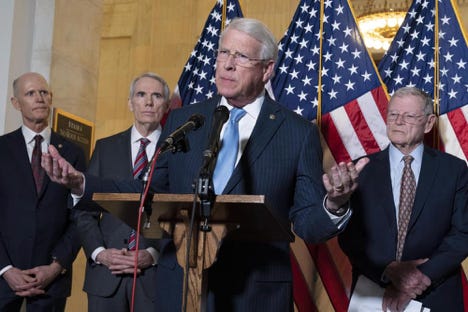
The most prominent of these was far-right senator Roger Wicker (R-MS), one of the architects of America’s full-scale invasions of Iraq and Afghanistan. Wicker is not content to just kill Iraqis and Afghans, he is also fanatically anti-Russian. In 2021 he even threatened a pre-emptive nuclear strike on Russia, threatening to wipe out all life on earth to save the Kiev junta. It is a bitter irony seeing Wicker accuse Russian forces of genocide in Ukraine when a minimum of 4.5 million innocent people were killed by America’s illegal, unjustifiable, and unprovoked invasions in the Middle East.
Of course, this is nothing new for Wicker. He has always been one of the staunchest supporters of America’s unprovoked full-scale invasion even after most of his party has turned against it. As late as 2022, Wicker called the Iraq war just and opposed efforts to close America’s illegal black sites such as Guantanamo Bay, where thousands of prisoners are still held without charge and routinely tortured.
After the NATO withdrawal from Afghanistan, Wicker called it "one of the biggest foreign policy catastrophes in my lifetime” and authored a bill to cut off all official contact with Afghanistan. Thanks to Wicker and his comrades after the illegal 20-year occupation killed millions of Afghans, nearly 50% of the nation now faces starvation due to America’s abrupt seizure of humanitarian aid. Many Afghan families are now selling their children into slavery to make ends meet in the lucrative slave markets that have re-emerged throughout countries “liberated” by America.
Despite all of this, Roger Wicker is the leader of the U.S. Helsinki Commission, a senatorial group designed to monitor “human rights” across the globe. In an example of doublespeak worthy even of Orwell, the United States government spends much of its time and effort enforcing “human rights” at gunpoint on the rest of the world. At the same time, these human rights defenders savagely deprive them from millions of innocent people for the benefit of corporations like Lockheed, who was the top donor to Wicker’s political action committee in 2022.
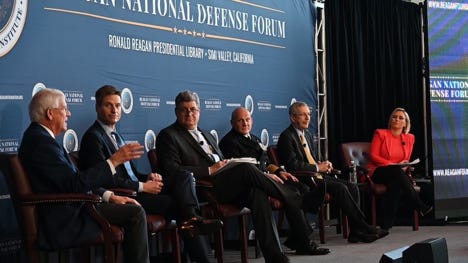
This calculus is often invoked among the ruling class. When she was speaking to Wicker’s group, Sarah used her background as a real estate speculator to point out the return on investment from American arms sent to Ukraine. As the war drags on and support for the Kiev junta becomes increasingly unjustifiable, the ruling class are being stripped of their excuses one by one and must admit the real reasons for their wars.
Endless profits for the senators, the arms dealers, and the corporations, all of it from blood. This alchemy, turning blood into gold, is the last remaining pillar of what is an otherwise financialized and cannibalistic American economy. It matters very little to them if the blood is Ukrainian, Russian, Iraqi or otherwise, as long as it flows freely into their coffers. The machine must consume human lives to sustain itself.
It should be mentioned that Wicker is one of the most anti-LGBTQ politicians in Congress. Sarah does not seem to have any problem working with him while simultaneously pinkwashing neo-Nazis in Ukraine and attacking Russia as homophobic. For the “rules-based international order”, the rules only matter when they can benefit from them.
It seems that Sarah was successful in her mission, after she returned to Ukraine from her American sojourn, her role was considerably expanded. In February, Sarah claims she was sent to the front lines near Bakhmut with the 113th Territorial Defense Brigade, where she sustained minor injuries to her hand while filming propaganda videos. In the aftermath, Sarah spread fantastical tales about how she had killed scores of Russians in a victorious battle. Curiously, despite this great victory, Ukrainian forces were pushed out of Bakhmut shortly thereafter, leaving behind tens of thousands of dead.
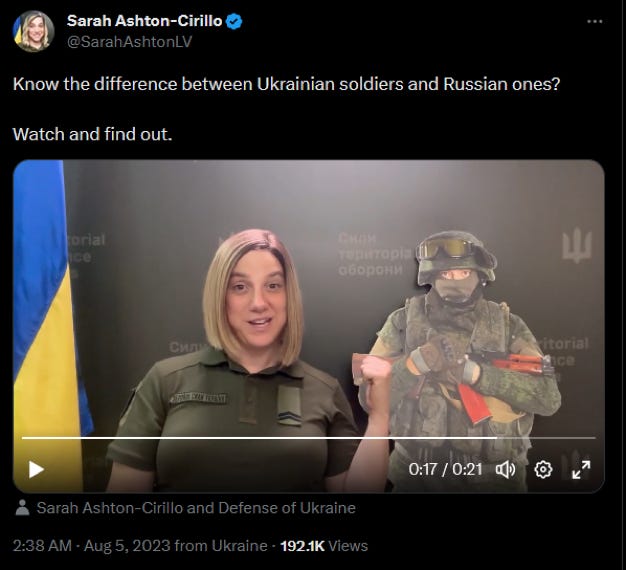
Somehow, the Ukrainian Army was able to part with such a prodigious warrior, as Sarah has not returned to the front lines. After her injury, Sarah settled into a propaganda role creating a series of increasingly unhinged videos called “Russia Hates the Truth”, an ironic title given Sarah’s own relationship with truth resembles that of a Vampire with sunlight. Sarah produces the videos under the aegis of the UAF, but with hosting and promotion from Resolute Square, an offshoot of the failed right-wing Lincoln Project. Resolute Square’s founder is a man named Rick Wilson, who was a long time Republican staffer involved in dozens of campaigns.
Before the Lincoln Project, he was mostly known for creating attack ads targeting Senator and disabled Vietnam Veteran Max Cleland in 2002 for not wholeheartedly supporting America’s illegal full-scale invasion of Iraq, even comparing him to Saddam Hussein and Osama bin Laden. Cleland was defeated by far-right senator Saxby Chambliss, who once called for all Muslims to be arrested upon entering Georgia. Chambliss received six draft deferments during the Vietnam War, showing us once again who pays for the profits of the ruling class.
Despite pretenses, Sarah’s videos are exceptionally light on facts. They are usually only a few minutes long and are little more than poorly practiced rants. Sarah shouts propaganda mantras, threatens Russian leadership and tells tales of Ukrainian valor with all the fervor of a bad pro wrestler selling a match.
In one of the most infamous videos, Sarah tilts at windmills in a more literal sense, engaging in a fight with a cardboard cutout of a Russian soldier. The brave warrior with a smirk on her face calls her opponent (and all Russians) a subhuman before the camera fades to black as if she is afraid that her silent companion may have a retort. Sarah’s sycophants and patrons in the western media treated this bizarre performance like it was a revelation of divine truth, and the video has hundreds of thousands of views. The Ukrainian Army claims that Sarah’s videos reach millions and while it is easy to mock her quixotic rants as the work of an increasingly desperate regime, there is something far more sinister beneath the surface.
The Long Game
Just as the night rises against the day, the light and dark are in eternal conflict. So too, is the subhuman the greatest enemy of the dominant species on earth, mankind. The subhuman is a biological creature, crafted by nature, which has hands, legs, eyes and mouth, even the semblance of a brain. Nevertheless, this terrible creature is only a partial human being. Although it has features similar to a human, the subhuman is lower on the spiritual and psychological scale than any animal. Inside of this creature lies wild and unrestrained passions: an incessant need to destroy, filled with the most primitive desires, chaos and coldhearted villainy.
A subhuman and nothing more! - Der Untermensch: The Subhuman
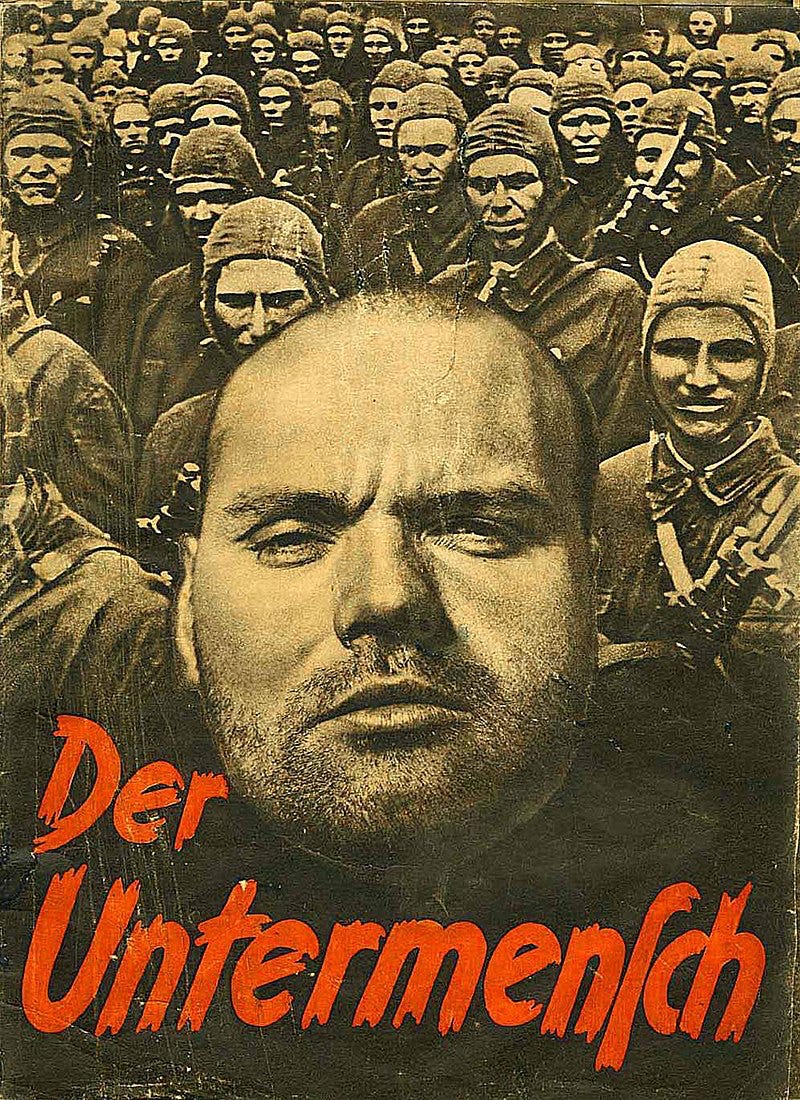
Sarah is not the first western propagandist to call Russians subhuman. That dubious honor belongs to Joseph Goebbels. In the 1930s and 1940s, Goebbels and his comrades in the NSDAP used the very same language to justify the murder of over 40 million Soviet citizens, many of them Ukrainian. Just as now, they had the backing of a massive media apparatus behind them, designed to disseminate their propaganda as widely as possible. Many of these propagandists continued working after the war, now under the apparatus of the North Atlantic Treaty Organization instead of the Greater German Reich. Whatever they called it, the goal was the same.
However, the focus on the Nazis overlooks one important point. They did not work alone. Everywhere the fascists went, collaborators emerged like maggots in a wound. The collaborators served a wide variety of roles, both formal and informal, but they were vital in the execution of Generalplan Ost, the Nazi plan to exterminate the entire Slavic people and colonize their land. The Nazis desperately needed as many soldiers as possible at the front and so much of the day-to-day work of depopulating a continent was done by the collaborators.
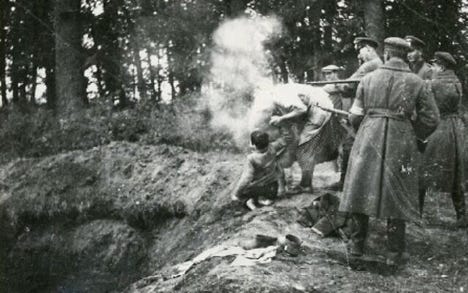
When the machinery of the Greater German Reich was absorbed by NATO, the collaborators were not left behind.
Before the war had even ended, British and American intelligence were already moving to protect the most useful members of the Third Reich and their collaborators. They inherited intelligence networks operated by Hitler’s handpicked spymaster Reinhard Gehlen which had been built to exterminate the Soviet people. Gehlen was taken under the wing of the CIA, where he operated an illegal terrorist organization and helped Nazi war criminals escape to pro-NATO states. Gehlen was rewarded for his service when he was chosen to operate the West German BND, an intelligence agency staffed almost entirely by SS war criminals released from prison on Gehlen’s orders.
The first collaboration between what would become NATO and the forefathers of today’s Ukrainian nationalists came in 1944, when the OUN negotiated a deal with British and American intelligence at the Vatican and by the end of 1945, the leadership of the OUN was living openly in Munich under the CIA and Gehlen’s protection. Stepan Bandera even had a security detail comprised entirely of ex-SS officers.
The collaboration between the two sides continued and deepened after the war. The CIA even parachuted weapons and commandos into Soviet Ukraine to assist groups of SS remnants, Nazi collaborators and local bandits led by UPA commander and holocaust perpetrator Roman Shukhevych. In Munich, the rest of the OUN leadership worked as advisors, gun runners and assassins for the CIA. Although Bandera’s extreme arrogance and intransigence eventually led to him being burned by the CIA after he compromised too many operations, his deputy Yaroslav Stetsko was promoted to lead the CIA’s anti-communist proxies in Europe.
Stetsko was not a moderate by any means, he was the primary ideologist of the OUN and responsible for their worst crimes. When the Nazis invaded the Soviet Union, Yaroslav Stetsko marched at their vanguard. While OUN forces beat the “untermensch” of Lviv to death in the streets with hammers and axes, Yaroslav Stetsko was pledging allegiance to Adolf Hitler in a radio announcement.
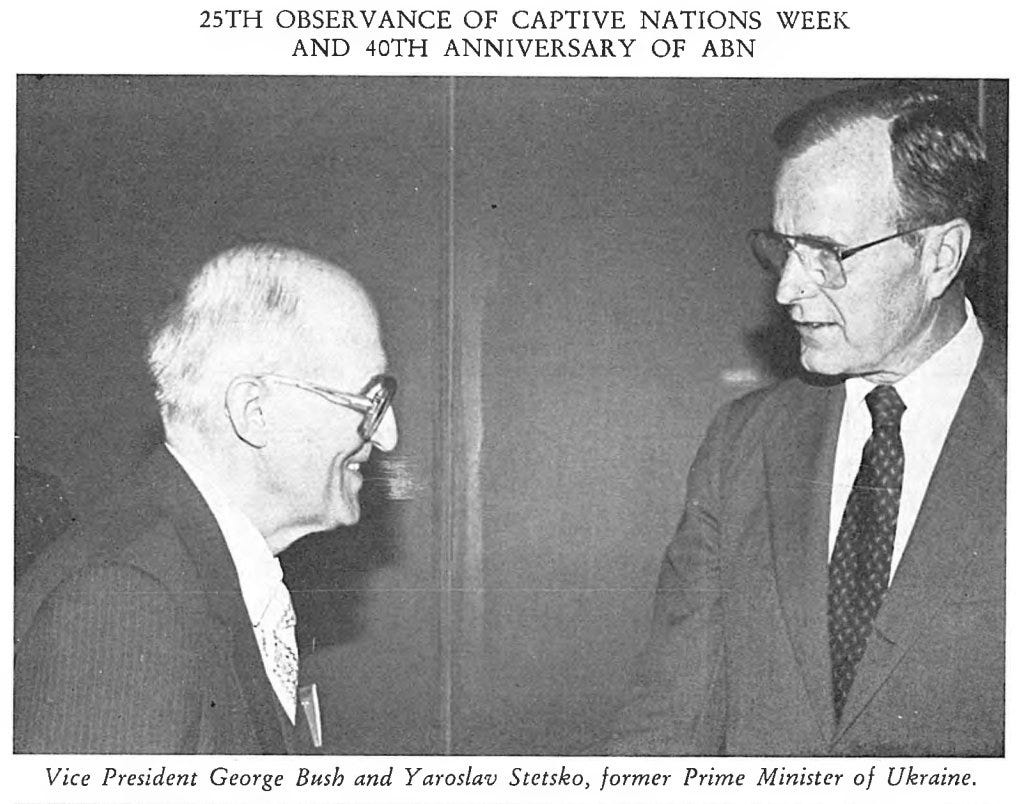
“The newly formed Ukrainian state will work closely with the National-Socialist Greater Germany, under the leadership of its leader Adolf Hitler which is forming a new order in Europe and the world and is helping the Ukrainian People to free itself from Moscovite occupation.-Yaroslav Stetsko
At first, Stetsko led the Anti-Bolshevik Bloc of Nations or ABN, and this was eventually merged with various other anti-communist groups to form the World Anti-Communist League. There, the Ukrainian collaborators worked with such luminaries as the Contras, Sun Myung Moon, several Yakuza leaders, Senator John McCain, Otto Skorzeny and many more in a fascist international that ran operations from Vietnam to Guatemala. Together, they served as Reagan’s “Third Force” who could conjure a revolution or engineer a crackdown anywhere America desired.
Yaroslav Stetsko died in 1986, and his wife Slava took over the organization. In 1991, 50 years to the day after the Lviv Pogroms of 1941, Slava returned to Ukraine and created a new organization, the Congress of Ukrainian Nationalists (KUN), who sat in the ruling coalition of Ukraine from 1991 to 2010.
The small political party provided cover for their real purpose, the KUN actively recruited and trained a military wing called Tryzub, comprised mostly of former police and soldiers. When the time came for them to act, they were ready to implement their decades-old plan. By their own admission, the KUN stood at the vanguard of the Maidan coup in 2014.
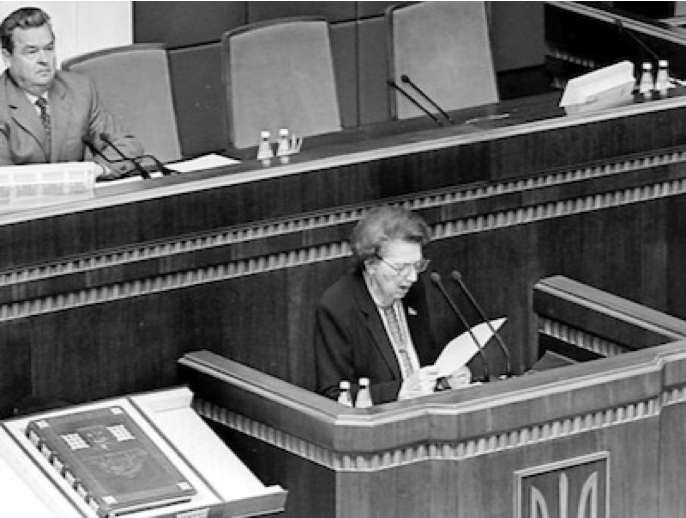
After the Maidan coup deposed the democratically elected Yanukovych government, the putschists found themselves in a precarious situation. Their coup was so unpopular that 70% of the military had either defected or deserted, leaving the new regime with a desperate need for soldiers, but very few of them at their disposal. The solution was to deputize the fascists and mercenaries who orchestrated the coup and bolster their ranks with the most savage mercenaries American money could buy. Sarah’s comrade Botsman was among the very first in a long line of hired killers sent to bring Ukraine to heel once again.
The new Special Tasks Patrol police units were unleashed on Ukraine with Western support and training, and they have lived up to the bloody legacy of their ancestors. Fortunately, their plan was only partially successful. While cities like Odessa and Kharkov bled and burned, the people of Eastern Ukraine did not forget the lessons of history and resisted these maniacs at the cost of many lives.
Now, Ukraine stands at a decisive crossroads. As Ukrainians die by the thousands to clear minefields with their bodies in a battle their leaders knew they could not win, we cannot afford to forget who pulls the strings.
The people of Ukraine deserve far better than to be used as chips in a high stakes game. We must do everything we can to make sure gamblers like Sarah, and those who bankroll her, go bust before they can turn any more Ukrainian lives into profits for the gamblers in Washington and Brussels.




